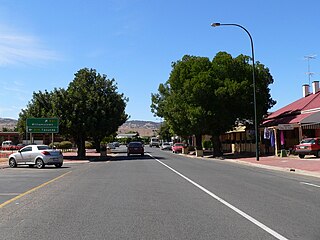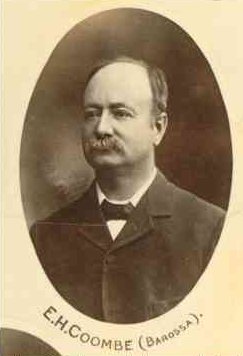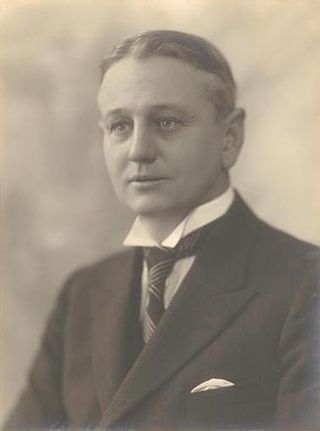Related Research Articles

Gawler is the oldest country town on the Australian mainland in the state of South Australia. It was named after the second Governor of the colony of South Australia, George Gawler. It is about 40–44 km (25–27 mi) north of the state capital, Adelaide, and is close to the major wine producing district of the Barossa Valley. Topographically, Gawler lies at the confluence of two tributaries of the Gawler River, the North and South Para rivers, where they emerge from a range of low hills.

Burnley is a constituency centred on the town of Burnley in Lancashire which has been represented since 2024 by Oliver Ryan, of the Labour Party.
Since 1970, the South Australian House of Assembly — the lower house of the Parliament of South Australia — has consisted of 47 single-member electoral districts consisting of approximately the same number of enrolled voters. The district boundaries are regulated by the State Electoral Office, according to the requirements of the South Australian Constitution and are subject to mandatory redistributions by the South Australian Electoral Districts Boundaries Commission in order to respond to changing demographics.

Norman John Oswald Makin AO was an Australian politician and diplomat. He was a member of the Australian Labor Party (ALP) and served as Speaker of the House of Representatives (1929–1932), a cabinet minister during World War II, the inaugural President of the United Nations Security Council, and as Australian Ambassador to the United States (1946–1951).

Lyndoch is a town in Barossa Valley, located on the Barossa Valley Highway between Gawler and Tanunda, 58 km northeast of Adelaide. The town has an elevation of 175m and an average rainfall of 560.5mm. It is one of the oldest towns in South Australia.

Schubert is a single-member electoral district for the South Australian House of Assembly covering an area of 2,017.8 km2. It is named after Max Schubert, the winemaker of Penfolds Grange Hermitage. The Barossa Valley area was first represented by the seat of Barossa. The seat of Custance was abolished and recreated as Schubert in the 1994 redistribution and first contested at the 1997 election. Schubert incorporates all of the Barossa Council, and is made up of portions of the Adelaide Hills Council, City of Playford, City of Tea Tree Gully, Light Regional Council, and Mid Murray Council. Areas covered include Eden Valley, Kersbrook, Nuriootpa, Lyndoch, Springton, Tanunda, and Williamstown.

Ephraim Henry Coombe was a South Australian newspaper editor and politician. He was editor of the Bunyip at Gawler from 1890 to 1914. He was a member of the South Australian House of Assembly from 1901 to 1912 and 1915 to 1917, representing the electorate of Barossa. A long-time liberal in the House, he refused to join the united conservative Liberal Union in 1910, and was defeated in 1912 recontesting as an independent. Following his defeat, he edited the Daily Herald from 1914 to 1916. He was re-elected to the House for Barossa in 1915, having joined the Labor Party, but died in office in 1917.

The Adelaide Plains Council is a local government area in South Australia. It consists of a largely rural region along the Gulf St Vincent, covering a total area of approximately 926 km2. The council seat lies at Mallala, but it also maintains a service centre at Two Wells.

John Lloyd (Jack) Price was an Australian politician and trade unionist. He was an Australian Labor Party member of the South Australian House of Assembly for Port Adelaide from 1915 to 1925. He later served in the Australian House of Representatives for Boothby from 1928 until his death in 1941, but left the Labor Party and joined the United Australia Party, following the 1931 Labor split over government responses to the Great Depression.

The Bunyip is a weekly newspaper, first printed on 5 September 1863, and originally published and printed in Gawler, South Australia. Its distribution area includes the Gawler, Barossa, Light, Playford, and Adelaide Plains areas. Along with The Murray Pioneer, The River News, and The Loxton News,The Bunyip was now owned by the Taylor Group of Newspapers and printed in Renmark.
Stanley was an electoral district of the House of Assembly in the Australian state of South Australia.

The 2018 South Australian state election to elect members to the 54th Parliament of South Australia was held on 17 March 2018. All 47 seats in the House of Assembly or lower house, whose members were elected at the 2014 election, and 11 of 22 seats in the Legislative Council or upper house, last filled at the 2010 election, were contested. The record-16-year-incumbent Australian Labor Party (SA) government led by Premier Jay Weatherill was seeking a fifth four-year term, but was defeated by the opposition Liberal Party of Australia (SA), led by Opposition Leader Steven Marshall. Nick Xenophon's new SA Best party unsuccessfully sought to obtain the balance of power.

The 1890 South Australian Football Association season was the 14th season of the top-level Australian rules football competition in South Australia.

Henry Burgess Crosby was an Australian politician who represented the South Australian House of Assembly multi-member seat of Barossa from 1917 to 1924, 1924 to 1930 and 1933 to 1938 for the Liberal Union, Liberal Federation and Liberal and Country League.

The Gawler Football Club was an Australian rules football club that was founded in June 1868 based at Gawler in the Township of Gawler about 39 km to the north-north east of Adelaide, South Australia.

Job Harris, was a store keeper, post master, hotelier, gold miner and South Australian prominently associated with the discovery of gold at the Barossa Goldfields, the largest gold rush in the colony of South Australia.
The Leader is a weekly newspaper that was first published in Angaston, South Australia on 24 July 1918, and continues being published to the present day in the Barossa Valley. It was the first English-language newspaper covering any part of the Barossa Valley, apart from the Kapunda Herald.
The 1933 Barossa state by-election was a by-election held on 8 July 1933 for the South Australian House of Assembly seat of Barossa. The by-election was caused by the death on 4 June 1933 of independent MP Dr Herbert Basedow, who had regained the seat at the 1933 election less than two months prior. He had previously held the seat from 1927 to 1930.
James Pile was a South Australian pastoralist who had extensive holdings on the Darling River in New South Wales, and succeeded by his sons William, John and Charles, collectively known as the Pile brothers.
The Division of Spence is an electoral district for the Australian House of Representatives. It is located in the outer northern suburbs of Adelaide in South Australia.
References
- ↑ "BAROSSA BY-ELECTION". Observer . Vol. LXXXI, no. 6, 040. South Australia. 1 November 1924. p. 35. Retrieved 27 January 2018– via National Library of Australia.
- ↑ "BAROSSA BY-ELECTION". The Register (Adelaide) . Vol. LXXXIX, no. 26, 183. South Australia. 26 November 1924. p. 10. Retrieved 27 January 2018– via National Library of Australia.
- ↑ "BAROSSA BY-ELECTION". The Register (Adelaide) . Vol. LXXXIX, no. 26, 147. South Australia. 15 October 1924. p. 8. Retrieved 27 January 2018– via National Library of Australia.
- ↑ "History of South Australian elections 1857-2006, volume 1". Electoral Commission of South Australia. Archived from the original on 11 July 2018. Retrieved 27 January 2018.